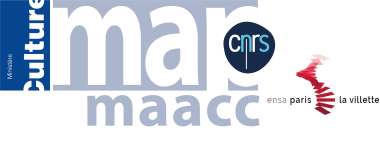Accueil > Productions scientifiques > The Potential of Co-Designing with Living Organisms : Towards a New (...)

Natasha HEIL
The Potential of Co-Designing with Living Organisms : Towards a New Ecological Paradigm in Architecture
Chayaamor-Heil, N. ; Houette, T. ; Demirci, Ö. ; Badarnah, L. The Potential of Co-Designing with Living Organisms : Towards a New Ecological Paradigm in Architecture. Sustainability 2024, 16, 673. https://doi.org/10.3390/su16020673
A research collaboration between MAACC/ENSAPLV France + The University of Akron USA + Middle East Technical University Turkey + University of the West of England UK
Living organisms have been progressively used by designers to propose alternative design outcomes aiming towards more ecological aspects. The design development and manufacturing of new materials or design components from living organisms are more achievable in textile, fashion, or product design than in architecture and construction due to the scale, multi-layer constraints, and requirements. The aim of this paper is to investigate the interdisciplinary framework, the opportunities, and limitations of introducing living organisms into the design process, including the implementation from the design ideas to prototyping until commercialization. In this paper, we focus on three types of living organisms : algae, bacteria, and fungi. Firstly, we overviewed and studied existing projects and experimentations to understand the design process and fabrication of living organisms in other domains in comparison to architecture. Secondly, we selected three case studies in architecture for each organism to analyze. We collected the data and conducted interviews with multidisciplinary experts involved in each case. Our findings show a better understanding of the potential to integrate living organisms in architectural design, the advantages, and the difficulties towards ecological awareness. The results from the interview and a comparative analysis show the advantages and constraints of each case. The future outlooks towards the use of living organisms as part of design in architecture are also discussed.
Keywords : algae ; bacteria ; mycelium ; living materials ; building construction ; biofabrication ; large-scale production ; sustainability
Voir en ligne : https://www.mdpi.com/2071-1050/16/2/673
